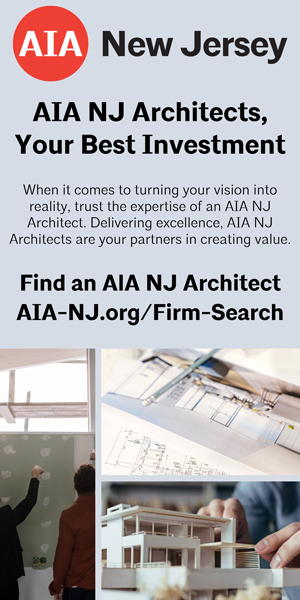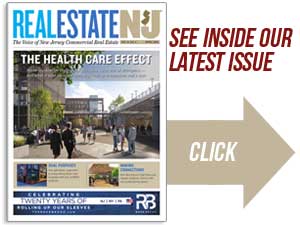The New Jersey Builders Association is set to welcome thousands of homebuilders, service providers and vendors to Atlantic City from Oct. 11 to 13 for the Atlantic Builders Convention, the largest building industry tradeshow in the Northeast, after an 18-month hiatus.
By Joshua Burd
The Atlantic Builders Convention is back, more than 18 months after COVID-19 forced the cancellation of one of the real estate industry’s largest and most high-profile events.
With the conference set to begin, Jeff Kolakowski points to one of the lessons — perhaps even a silver lining — of having both daily life and business be upended by the pandemic.

“It shined a light on the importance of housing,” said Kolakowski, the CEO of the New Jersey Builders Association. “Houses became our workplaces. They became our schools. They were so much more an integral part of our everyday living activity. And what we’ve seen in the market, with the price increases, is that we have a huge undersupply problem here in New Jersey.”
That came as no surprise to those in the homebuilding industry, but it was also a reminder that “too many of our state’s residents suffer with affordability issues here in New Jersey,” he said, highlighting a challenge that goes hand in hand with the lack of supply.
It’s a key theme as the NJBA prepares to welcome thousands of homebuilders, service providers and vendors to Atlantic City this week for the largest building industry tradeshow in the Northeast. For many, it’s was the first mass gathering since before the pandemic, providing an opportunity for in-person networking on the sprawling convention floor and at events such as the Sales & Marketing Awards.
The 71st Atlantic Builders Convention is also slated to feature a two-part program, “Housing the State of NJ: An Economic Analysis and Panel Discussion,” which sought to highlight the key issues of supply, affordability and diversity across both the for-sale and multifamily rental segments of the market. To Josh Mann, the NJBA’s chapter president for 2021, those topics are as timely as ever, as the organization and the industry look to recalibrate after COVID-19.

“I think people have gotten through the ‘black swan event’ in housing and, for our industry, it was something that really focused us to buckle down through some uncertainty,” said Mann, co-founder and co-managing partner of Iron Ore Properties in Millburn. “And then at the end, it just let us all understand that the demand for housing in New Jersey remains extremely high and that as a whole, our failure to be able to deliver enough housing units to meet that demand is something that remains very real.”
Real Estate NJ spoke to Kolakowski and Mann ahead of this year’s conference, in a conversation that touched on both pressing public policy issues and the health of the organization. Below are excerpts from our interview, which has been edited for space and clarity.
Real Estate NJ: This is a major step for the organization and the industry. What is the mood of your members heading into ABC?
Jeff Kolakowski: Despite the ongoing, new complexities of the world that we now live in, we’re still seeing a tremendous amount of demand for the show. We were one of the first events that got canceled back in April 2020, so it’s been 18 months since we’ve gotten together, as we’ve been largely functioning virtually. And everyone seems to be very excited and ready to resume some in-person networking, because there are just some things that can’t be replicated via videoconferencing … We’re extremely excited about the opportunity to once again provide these opportunities for our members and for people in the building industry.

RENJ: Looking back at the last year and a half, your members were on the front lines of the pandemic housing boom. What do you take away from that and what is the impact going forward?
Josh Mann: For us on the building side, it really focused us. And (if you) understand some of the Census data that came out during the pandemic, I think it was dispositive that New Jersey is still a place where the population has grown, especially in transit areas, but it’s true throughout most of the state. … I just think that it goes to what we have been talking about, which is that the demand is there and, until we can provide the supply to meet that demand, there’s going to be a continuing affordability crisis.
(That’s) not only bad from a public policy standpoint — it’s bad for business, in our business, if there’s an affordability problem. We need to be able to create starter homes, to get people started on the way to homeownership who eventually can sell those homes and then move into homes that are beyond the starter home level. From a rental standpoint, if we can’t build to rents that people can afford, then we can’t build. We could talk about all of this until the proverbial cows come home. At the end of the day, we shouldn’t overcomplicate it. It is a simple supply and demand issue.
RENJ: What is the solution from a public policy standpoint?
JM: I think that policymakers in the state of New Jersey have some difficult choices to make over the next four to five years, because regulatory goals could create situations that make housing more expensive. And balancing what the regulatory and statutory goals of policymakers are with housing affordability is something that should be a question that’s asked every time someone has a new idea. How is it going to affect the affordability of housing and the ability of both the for-profit and nonprofit sectors to deliver housing? And it has to be part of any cost-benefit analysis that you do as policymakers. Plus, these can’t be looked at in a vacuum. They have to be looked at with housing affordability in mind.
RENJ: Are you talking about any issues or policies in particular?
JK: There are so many structural issues that New Jersey has that impact the ability to provide affordable units here. There’s a host of things and we need to start a serious conversation in New Jersey and make meaningful reforms to these structural issues that we have.
JM: For example, at the state level, look at residential site improvement standards and the parking requirements that are placed on multifamily buildings. I think you have to look at things like that and say, OK, you’ve got these parking requirements where, in some cases, we are building to a standard where people are actually extra driving less, yet you are spending tens and tens of thousands of dollars on concrete parking structures in order to park them. Or you can’t have as much green space in a development because you have to accommodate 1950s-style or 1970s-style parking requirements. What’s your balance as far as what’s important? Is it more important that you try to limit density by forcing two parking spaces for a one-bedroom unit? Or is it more important to make that building more affordable for the end user? Whether it’s the towns or the state, you have to make decisions like that.
JK: And it’s (about) reforms to the development process here, it’s providing incentives for homeownership. We can look to other states that are also having this conversation and they’re talking about not only the parking requirements around, particularly, transit-oriented development, but also the density around transit-oriented development to take advantage of our existing transportation infrastructure and encourage people to utilize it. We could look at things like accessory dwelling units, prohibiting single lot zoning.
We can give a couple of dozen initiatives right now, but what we’re looking to do is build a coalition of policymakers, of interest groups, because at the end of the day, we need legislation that’s the result of compromise and buy-in from a lot of entities if we’re going to get anything done and get it through the process in Trenton.
Click here or the link below for part two of our Q&A.
NJBA leaders: Outlook for organization, industry strong despite challenges to housing supply










